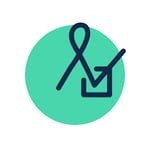The world sees the finished or near-finished product, but to get there, it takes a passionate and intelligent team to ideate, build, strategize, and launch the product.
Let’s understand why and how to prioritize product features and the top techniques to prioritize the backlog.
Why Product Feature Prioritization?
When a product manager works on his dream product, several ideas could pop up in his head or within the product team. All ideas may be good, but the product guy needs to choose the right one to succeed. The story does not end here with choosing the right idea. The idea needs to be executed perfectly as well. Companies fail because of:
- Choosing too many right ideas
- Lack of good ideas
Most product managers will agree they have difficulty deciding which features deserve the team’s limited time, resources, money, and energy.
Prioritization of the product features is always one of the most critical decisions for the product teams, as this decision makes or breaks its overall success. Even the most seasoned product manager struggles to determine and reach the ideal features and initiatives prioritization.
So, how do you decide your priority sequence with so many competing opportunities?
Review the Product Backlog
A product backlog is a Wishlist containing a list of items that could help in making an amazing product. A product backlog contains items that are yet to be prioritized to be worked on by the development team. Ideally, it should only have those items that are useful to the product, either for current or future releases. Common items included in the product backlog are:
- Features
- Ideas
- Bugs
- Technical work (Optimization, Technical debt, etc.)
In a scenario where the product manager is unable to define a solid product backlog in sync with the organization’s business objective, a Product Backlog acts as a shopping cart where you could choose one, few, all, or no items while making a purchase decision.
A product manager must review the backlog often to ensure what is super urgent and can make a cut as the next feature.
Strategy to Product Prioritization and Managing the Product Backlog
Kano
Kano is a model that is used to understand customer satisfaction and product development. It is based on the idea that customer satisfaction is not just based on the presence of certain features in a product but also on the degree to which those features are delivered. Kano can help prioritize product development efforts and decide about the features to include or remove from a product.
MoSCow
MoSCoW is a prioritization technique used in product management and business analysis to prioritize a list of requirements. MoSCoW represents the following aspects:
a. Must Have
b. Should Have
c. Could Have
d. Would Have
Using the MoSCoW method, we can ensure that the most important requirements are met and that resources are allocated accordingly. This technique is also used with other methods such as the Kano Model, Pareto Analysis, and Risk Analysis.
RICE
The RICE model is a framework used in product management to prioritize features and initiatives. The acronym stands for Reach, Impact, Confidence, and Effort.
a. Reach: The number of users or potential customers affected by this feature or initiative.
b. Impact: The potential positive or negative impact of this feature or initiative on the user or customer.
c. Confidence: The team’s confidence is in understanding the problem and proposed solution.
d. Effort: The resources required to develop and implement the feature or initiative.
OKR
OKR stands for Objectives and Key Results. It is a framework to set and track progress towards specific, measurable goals. We can use OKR wrt the product development efforts focusing on the overall goals and strategies of the organization. The objectives are the overall goals or targets the product team wants to achieve, and the key results are the specific metrics or milestones that measure the progress toward those objectives. Product managers use OKR to track and set specific goals for a product, product line, or the entire product portfolio.
Now that the planning to build a product is done, we need to get to the next step. We must track the ROI (Return on investment) on features, right?
To track the ROI, we must measure the important product metrics used to prioritize the right profitable feature. These metrics can be used as per the business type (B2C, B2B, D2C, etc.)
Evaluate a Product’s Success with These Metrics
There are various metrics that product managers can use to measure the performance and success of their products. Some common examples include:
Customer Satisfaction 
Customer satisfaction is a critical metric for measuring product success, as it helps determine how well a product meets customer needs and expectations. Here are a few ways to measure customer satisfaction:
- Surveys: Surveys help get holistic information and user feedback on their overall product satisfaction and specific features or aspects. This can be done through email, phone, in-person interviews, or online survey tools.
- Customer retention: Retention measures how well a product satisfies customers. It is the percentage of customers who continue to use the product after a given period of time.
- Customer complaints: This metric measures the number of customer complaints for a product. It can be used as a proxy for dissatisfaction.
- Customer return rate: This metric measures the number of customers who return a product. It can be used as a proxy for dissatisfaction with the product.
Customer Retention Rate 
Retention rate can be measured for different periods of time, depending on the product and the goals of the product team.
Retention rate can be measured using BI tools such as CRM and other analytics platforms & tools or using customer feedback surveys. It is important to track the retention rate over time to identify any trends and changes. This data can be used to enrich the product, its features, and customer support.
Customer Acquisition Cost (CAC) 
Customer acquisition cost is the cost of acquiring new customers. The end goal of CAC is to reduce the cost of customer acquisition. The goal is to bring down CAC while moving the lifetime value upward for each customer. This metric can help a business determine the effectiveness of its sales and marketing strategies and adjust to improve profitability.
Customer Lifetime Value (CLV) 
This is a business metric used to track the average earning from customers over a period. Differences in product costs, purchase frequencies, and purchase volumes can complicate customer lifetime value calculations.
Net Promoter Score (NPS) 
This metric measures customer loyalty and the likelihood of recommending a product. NPS is a metric used to gauge customer loyalty for a product & likelihood of recommending the product or service. It is typically calculated by asking customers to rate their likelihood of recommending a company on a scale of 0 to 10 (0 is minimum & 10 is maximum). Customers who give a score of 9 or 10 are considered "promoters," those who give a score of 0 to 6 are "detractors," and those who give a score of 7 or 8 are "passives."
A positive NPS indicates that a company has more promoters than detractors, and a negative NPS indicates the opposite. NPS is widely used across industries to measure customer satisfaction and loyalty. High NPS defines a strong connection between the customer and the brand.
Customer Effort Score 
Customer Effort Score (CES) is a metric used to measure the ease of a customer's experience in resolving issues or completing a task. It is based on a question that asks customers to rate their experience on a scale from "very low effort" to "very high effort". The CES score is typically calculated by taking the percentage of customers who rate their experience as "very low effort" and subtracting the percentage of customers who rate their experience as "very high effort".
User Engagement 
This metric measures how often and for how long users interact with a product. User engagement refers to the level of interaction and involvement that a user has with a product, service, or website. High user engagement is typically characterized by users’ behavior. It can be measured by the following:
- Time on a page
- Page views
- Bounce rate
- Top exit pages
- Pages per session
- Page/scroll depth
- Unique visitors
- New vs. returning visitors
- Conversion rate
- Abandonment rate
User engagement can also refer to the level of satisfaction and loyalty that users have with a product or service. Measuring user engagement is important for businesses and organizations as it can help them understand how well their products or services resonate with the users and where they need to improve.
Product Adoption 
Product adoption metrics are used to measure how many people are using a particular product or service. They help to track the success of a product or service over time, and determine how well a product or service is resonating with its target market.
Some common product adoption metrics include:
- Usage rate: Percentage of users actively using the product.
- Activation rate: Percentage of users who have completed the initial steps required to use the product, such as creating an account or setting up their profile.
- Retention rate: Percentage of users who continue to use a product over a specified period.
- Referral rate: Percentage of users who recommend the product to others.
- Upsell rate: Percentage of users who upgrade to a more advanced or expensive version of the product.
- Churn rate: Percentage of users who stop using the product over a certain period of time.
Product adoption metrics help organizations understand how well customers receive their product and where they need to improve.
Revenue 
Revenue product metrics are used to measure the financial performance of a product or product line. These metrics help organizations understand the money a product generates and its profitability.
Some common revenue product metrics include:
- Revenue per user (ARPU): The average revenue generated per user over a specific period.
- Lifetime value (LTV): The total revenue a customer is expected to generate over their lifetime.
- Margin: The profitability of a product by considering the cost of goods sold (COGS) and other expenses.
- Sales: The total number of units sold or revenue generated for a product or product line over a specific period of time.
- Gross margin: The difference between revenue and the cost of goods sold for a product or product line.
- Average sale price (ASP): The average price of a product or product line.
Revenue product metrics are key indicators of a product's financial performance and help make informed decisions on product pricing, marketing strategies, and product development. They provide insights into how much revenue is generated and how much is spent on the product, which helps organizations identify potential areas for growth and improve profitability.
Margin 
Margin product metrics are used to measure the profitability of a product or product line. They help organizations understand how much profit a product generates and how efficiently resources are being used to produce and sell that product.
Some common margin product metrics include:
- Gross margin: The difference between revenue and the cost of goods sold (COGS) for a product or product line. It is calculated by dividing gross profit by revenue and multiplying by 100.
- Operating margin: The profitability of a product after considering operating expenses such as research and development, marketing, and general and administrative costs. It is calculated by subtracting operating expenses from gross profit and dividing by revenue.
- Net margin: The profitability of a product after adding all costs, including taxes and interest. It is calculated by subtracting all costs from revenue and dividing by revenue.
- Contribution margin: The profitability of a product by considering the difference between the sales price and the variable costs of production.
- Return on investment (ROI): The profitability of a product by considering the ratio of profit to investment. It's calculated by dividing the net profit by the total cost of investment.
Margin product metrics are important for organizations because they provide insight into how efficiently resources are being used to produce and sell a product and how profitable that product is. These are a few examples, and the specific metrics used will depend on the product and the goals of the product team.
Conclusion
Prioritizing product features is crucial in product development. Understand your audience's needs, product goals, and objectives to prioritize impactful features. Define success and regularly measure progress to improve the product. Prioritization and measurement ensure products meet user needs and achieve desired outcomes.





